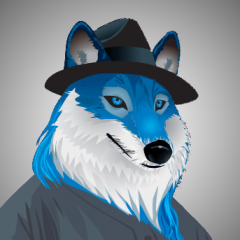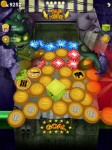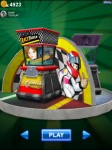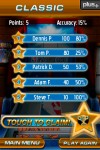Tonight I was at a local gathering of moonlighting game developers. One artist was having a lot of issues with his character rigging in Maya. He kept having to go back and recreate his skeleton and skin weights over and over again. He wanted to know what the typical workflow was for rigged characters. He described exporting the skin weights so that he could reimport them if things went wrong.??
This is not a technical explanation. These concepts will be just as valid for Blender or 3dsMax as they are for Maya.
Here were my suggestions.??
The first guideline to remember is to make backups often. That means save the maya file and make a duplicate, or put it in a version control system. How often? At least once an hour. Also save additional copies when you feel you have finished something complicated. There are some tools out there that will do this automatically for you.??
Be sure to save the it as a Maya file. Exporters should only ever be used as a last resort. Don’t use a skin weights exporter to ‘save’ the state of that part of the mesh. Always save everything, and that means the Maya file itself.
Phase 1: mesh phase
Get your mesh formed how you want it in a bind pose. Do lots of test deforms manually, and then reset it back. This will be the only phase you will be able to easily add or remove vertexes. You can move the vertexes easily later for tweaking, but adding or removing them later can be dangerous.
Put extra vertexes near joints that are expected to bend significantly, like more than 20 degrees. Take a human elbow for example. You might think one ring of vertexes at the place that the elbow will bend internally would be enough. Instead, have at least two rings of vertices just above and below where the elbow will bend. This will later be used to smooth out the large joint changes.
You may freely do texturing in this phase if desired. It is easier to do if you aren’t adding and removing vertexes, but it doesn’t hurt to do it here (or in any following phase).
Phase 2: building the skeleton
Now we will build the armature that must line up with the mesh. It is vitally important that you don’t move forward until the skeleton lines up with the expected internal joints of the mesh.
Starting in a 2d view, perhaps Front, build the armature and line it up with your mesh, all in this 2d view only. Do not bind the mesh yet! Then use a Side view and tweak only the depth of each pivot point. You will likely have to adjust the joint lengths slightly to maintain the proper lengths.??
As you build each joint, this is the best time to create any movement constraints you want on your joints. The range of motion can be adjusted later, but the correct orientation of the joint must be set now. In the case of an elbow, you will want to align one axis with the large up and down rotation that elbows can do, leaving the other axis for the smaller side to side motion limits.
You are welcome to add any desired inverse kinematics or other control structures at this or later phases. This can be handy for quickly testing the resulting mesh. Just be sure to undo any movement created by the controls before you get out of sync with the mesh.
Largely you will want joints that match up with real physical joints. A joint at an elbow for example. That said, there are some unexpected tweaks that can significantly improve the quality of the final skeleton.??
An arm with a hand on the end should have an extra joint added just above the wrist joint, perhaps a quarter of the way between the wrist and the elbow. Keep it in line with the ‘bone’. This joint will never be rotated to ‘bend’ the bone, only ever rotated to partially follow the wrist rotation. This way the wrist can rotate up and down, and side to side while not significantly affecting the forearm. (See this superb but technical paper for more information.)
Another exception is to remember that the joints do not have to stay physically inside the mesh. If there is a large curved mesh section that will never change curvature (like an alien arm with a curved bone), just make a single joint from one end to the other. You do not need smaller joints in between just to keep it visually within the mesh. Joints are never rendered.
Once you have realigned everything, go back to a perspective view, and triple check the joint positions. You will not be able to easily go back and change the joint lengths after this phase.??
Phase 3: binding the skin
It is finally time to bind the skeleton to the mesh in its bind pose. Pay close attention to the options in the binding tool. You will want to have Maya make as many vertex weight calculations as possible for you. Therefore bind it, and then start deforming the joints to see how well the default skin looks. The resulting mesh should look good in most places, and need tweaking in a few. If the skin moves like it is a mushy sack of potatoes, undo the bind, set a smaller influence radius and bind it again. On the other hand, if the skin looks rigid then the influence radius is too small.
Phase 4: everything else
At this point the key features are set in stone: the vertex count and the joint count. From here is all tweaking. Editing the texture itself, or the uv coordinates is perfectly fine. Editing the skin weights is a must to get every movement just right.
You may edit the positions of some vertexes, tho it is discouraged. Doing so also requires adjusting the skin weights. Typically it is better just to adjust the skin weights alone. Either way, do not add new vertexes or remove them. It tends to mess things up badly.
Avoid changing joint lengths. You can do it, but then you have to adjust a fair number of vertex positions and weights to make it not feel stretched.
Maybe this artists guide to the workflow of creating skin meshes will help someone out there. It already helped one, so it must be of some use! If it is useful to you, pass it on. If I’m wrong about something, poke me on twitter @DrakkenWulf. Happy modeling!









